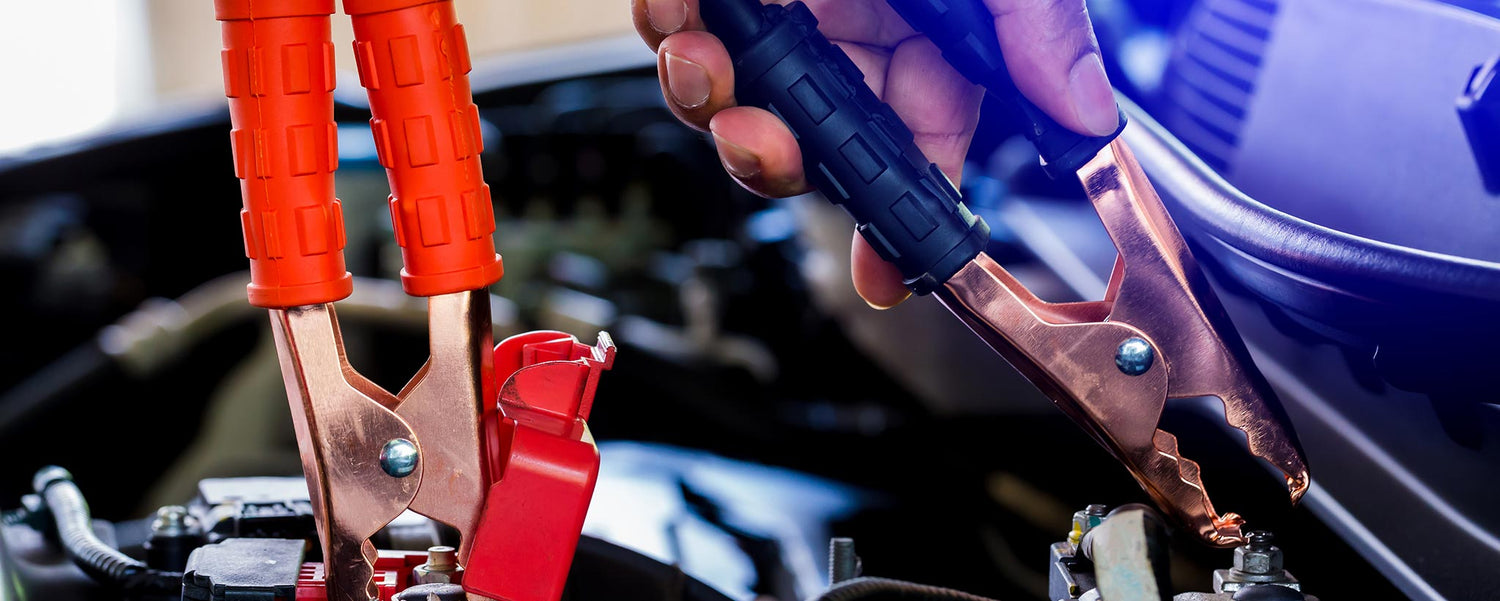AAA To The Rescue
When your vehicle sits for days, weeks, or longer without driving, the battery drains. This prevents your automobile from starting when you need it. Leaving a battery dead for long periods can completely devastate the inner chemistry composition that allows the battery to function properly.
Roadside assistance services like the Automobile Club of Southern California (AAA) are experiencing an upsurge in battery assistance calls. Most are vehicles within subscribers’ driveways or garages.
Though AAA offers roadside assistance plans with extended tow mileage, all plans have a limit of four calls per year. In addition to jump-starting batteries, AAA sells them with a 3-year replacement guarantee. There is little catch to this. They will replace their branded battery only on the third visit to service it. So each call for a jump-start counts toward your annual four-call service limit.
New car warranties and some automobile insurance plans include roadside assistance. They may cover the cost outright or issue a reimbursement.
Ways to Charge
You recognize the frequent need to recharge a smartphone. Think of your automobile like a much larger smartphone. Unless your car is electric, it has a 12-volt rechargeable battery (6-volt for motorcycles).
When the engine is not running, your auto alarm, door locks, LED clock, and other sensors drain a small amount of power from your battery. The car needs a strong burst of electricity to turn over the engine. While it is running, the alternator provides electricity while recharging the car battery.
If you are not driving regularly, the battery capacity diminishes. This occurs more rapidly with older batteries than new ones. To keep it fully charged, you have three options:
1. Drive around town for 30 minutes or longer every few days. This allows the alternator to recharge your battery, even if you are not driving to work.
2. Leave your engine running for an hour every three days. Keep automobile doors locked in a ventilated garage, away from people. Some cars have remote engine starters.
3. Connect your battery to a low-voltage trickle charger. A trickle charger differs from a jump starter, though some have a switch to do both. Providing 5 amps or less, it plugs into an electrical socket and includes positive and negative clamps to attach to your battery. Over a matter of hours, the battery is fully charged. Modern ones shut down automatically at full capacity.
To get on the road immediately, you can’t wait for a trickle charge. If you have an SUV or large vehicle, you need a powerful jump starter. With enough cranking amps, the engine will turn over. But you still need to drive for at least 30 minutes for the battery to retain any power.
Battery Capacity
Cranking amps determine how much power is available to start your car in most climates. Storage capacity is measured in Amperes hours (Ah). A typical car battery is 60 Ah. Reserve capacity is a battery’s ability to sustain a minimum vehicle electrical load in the event of a charging system failure.
According to Canbat, “The difference between Cold Cranking Amps and ampere-hours is something like the maximum speed a sprinter can attain in a 100-yard dash versus the endurance required to run a marathon.” Large vehicles require batteries with higher cranking amps (or cold cranking amps in cool climates) and reserve battery capacity.
Both high desert temperatures and extremely cold climates shorten battery life to an average of 2–3 years. With proper care in moderate temperatures, your battery may last 3–6 years. You might choose to replace batteries every three years.
If you have multiple vehicles, a trickle charger (less than $50) may be a wise investment to extend each battery a couple of years. With most California residences, battery maintenance is less of a consideration, unless there are shelter-in-place orders or you have multiple vehicles and are not able to drive them all regularly.
Charging Forward
You may be tempted to buy pocket-size models that are essentially high-capacity mobile device chargers with battery cables. They can charge your motorcycle, small boat, and a boatload of portable electronic devices. But for large vehicles, it is like bringing a knife to a gunfight.

Jump-N-Carry (JNC) battery panel.
The jump starters that roadside assistance services use cost between $100 and $300. For occasional personal use, the medium price range is more than adequate. These units contain a rechargeable battery. One model for $130 excludes the $16 charging cord. Therefore, you may prefer to purchase one for around $150 that includes the cord and more features like the Clore Automotive JNC770R Jump-N-Carry.
- 1700 Peak Amps; 425 Cranking Amps
- Clore PROFORMER Battery Technology
- 68" #2 AWG Welding Cable Leads
- Heavy Duty PowerJaw Clamps
- Built-in 3A Automatic Charger
- 7-Segment Indicator Display
- 2 USB Ports
This 22-pound beast can start multiple vehicles in succession before requiring a recharge. Competitive brands recommend recharging after a single jump. Like your car battery, Jump-N-Carry can lose charge over time if idle. To preserve power longer, a master on/off switch ensures that the clamps are inactive during transportation and storage. Jump-N-Carry also includes a single-use manufacturer coupon that allows you to have the device restored or replaced at any time for $100.
Should you buy a trickle charger or a jump starter? Ideally, you might have one of each. Models that include both compromises on the top end. If you use the trickle charger regularly, you may never require a jump-start. However, if you live in an extreme climate, are on deserted roads day or night, or your vehicle sits for long periods, portable power can offer peace of mind. You get moving without waiting for roadside assistance or searching for another vehicle with jumper cables.
To support the writing of useful articles about technology, ClinicalPosters sells human anatomy charts, scientific posters, and other products online. You may sponsor specific articles, become a ClinicalNovellas Member, or remit a small donation.
ClinicalPosters sells human anatomy charts, scientific posters, and other products online to offset expense of the writing useful articles about technology. Slide extra posters into DeuPair Frames without removing from the wall.
Show your support by donating, shopping for ClinicalPins, becoming a ClinicalNovellas Member, or leaving an encouraging comment to keep the research going.
To support the writing of useful articles about technology, ClinicalPosters sells human anatomy charts, scientific posters, and other products online. You may sponsor specific articles or remit a small donation.
ClinicalPosters sells human anatomy charts, scientific posters, and other products online to offset expense of the writing useful articles about technology. Slide extra posters into DeuPair Frames without removing from the wall.
ClinicalPosters sells human anatomy charts, scientific posters, and other products online. You may remit a small donation or become a ClinicalNovellas Member.
You can support the writing of useful articles about technology by sponsoring specific articles, becoming a ClinicalNovellas Member, or remitting a small donation.





